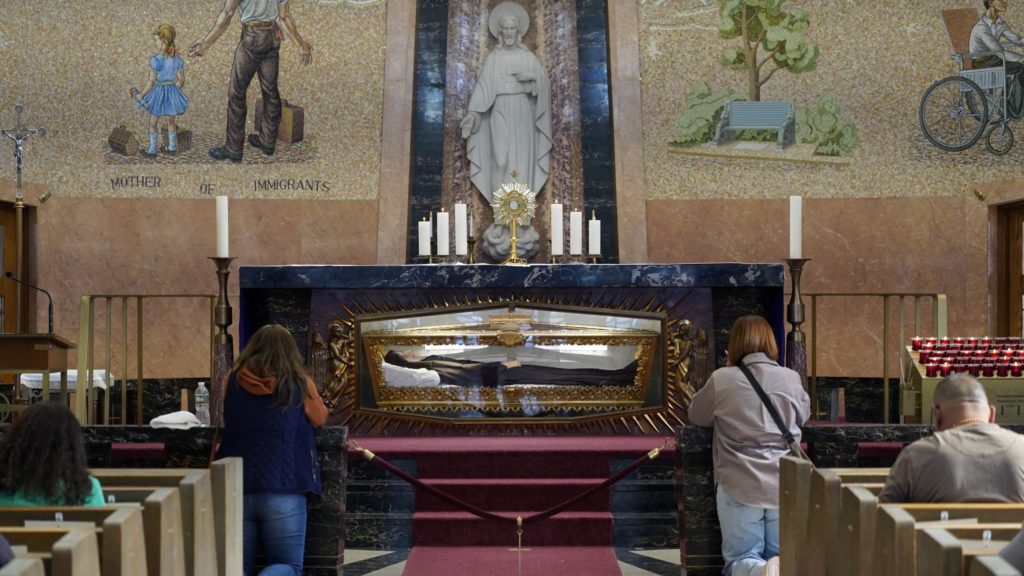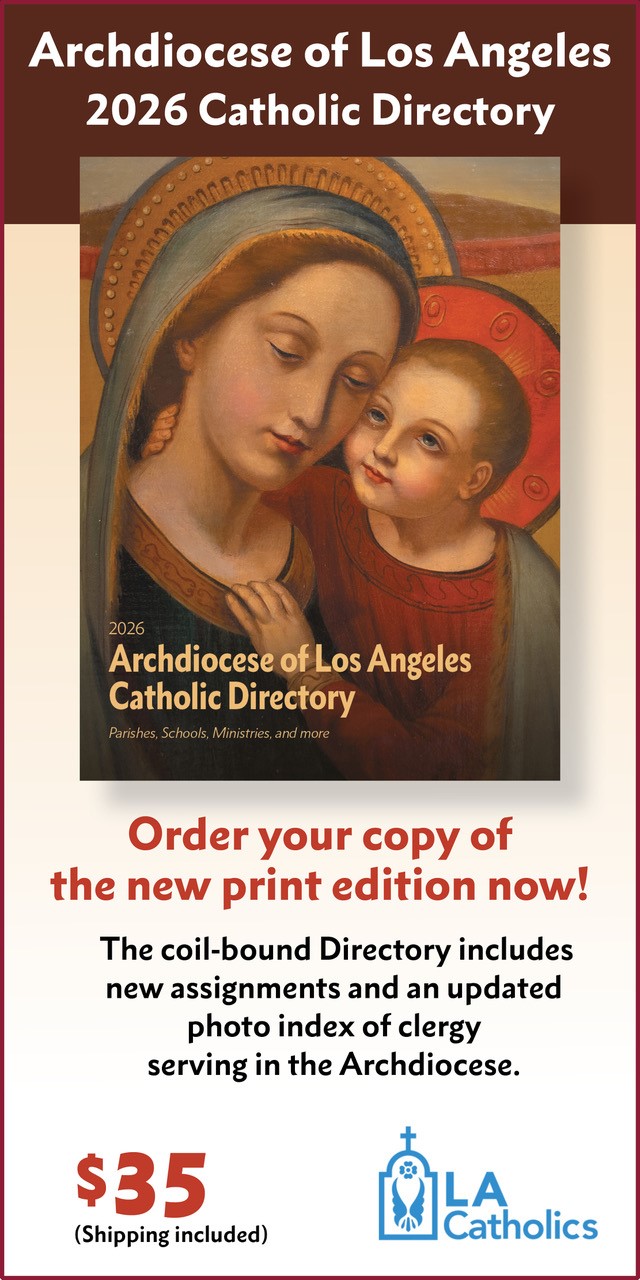Manhattan, I reflected on a recent trip, is like a giant swaddling cloth, enclosing the Mystical Body.
Within a block of almost any Mass you can buy a cruller from the coffee-and-donut guy (“There ya go, sweetie”), a box of figs from the fruit guy, a fish gyro from the falafel truck.
As always when traveling, I walked everywhere I could, leaning toward museums, gardens, and churches.
I also set aside a day for a subway trip to Washington Heights, way up toward the north tip of the island. Step out of the 190th Street train station and you’ll see a raucous public basketball court and playground, right next to the St. Frances Cabrini Shrine.
Italian-born Mother Cabrini (1850-1917), as you may know, is the patron saint of immigrants as well as the first U.S. citizen to be canonized by the Catholic Church. She founded the Missionary Sisters of the Sacred Heart of Jesus, an order that provides education and health services to the poor.
In chronic poor health herself, Cabrini was nonetheless known for her drive and tenacity. “Too Small a World” (Ignatius Press, $18.95), the title of Theodore Maynard’s biography, refers to Cabrini’s passionate desire to spread the Gospels to every corner of the earth.
She lived and taught in New York City for many years, devoting herself in particular to her fellow Italian immigrants. As well she founded 67 orphanages, schools, and hospitals throughout Europe, Central and South America, and the rest of the U.S.
The shrine houses, among other items, Cabrini’s worn black button boots, the cane she used to walk when she was older, and her portable Mass kit, a slim leather case, lined with watered silk, holding unconsecrated hosts and a gold-embroidered purple stole. She carried the kit on her many sea voyages in case she ran into a priest who could celebrate the Holy Sacrifice. I want one of those!
But the big draw of the shrine is that the saint’s body, with face and hands molded in wax, reposes in a see-through crystal casket beneath the altar of the attached church. Adoration was being celebrated the day I visited, so instead of peering in I went to the back of the sanctuary and prayed — an activity I’m sure Cabrini would have considered way more important than viewing her (however holy) remains.
Thus fortified, I left the shrine and walked the few minutes to Tryon Park, where the Heather Garden (consistently voted one of New York City’s best gardens) was alight with bloom and butterfly.
From there, a short and lovely stroll led to the Met Cloisters. Designed by architect Charles Collens and opened in 1938, the Cloisters is a branch of New York’s Metropolitan Museum dedicated to the medieval art of Europe. Portions of four cloisters from what is now France were incorporated into a modern building that looks hundreds of years old.
The collection includes 2,000 works of art dating from the 1300s through the 1600s: jeweled crosses, illuminated manuscripts, reconstructed chapels. Three of the cloisters feature lovely gardens of flowers and herbs that in early August were still in full peak.
The cynosure of the collection is a series of seven tapestries, dating from 1495 to 1505, known collectively as “The Hunt of the Unicorn.” I’d visited the Cloisters before and, wondrous though the tapestries are (to this day, no one knows who wove them), was more drawn this time to the altars, stained glass, and religious paintings and statues.

A fantastic hexagonal paschal candlestick, for example, constructed in three tiers, is surmounted by a fat beeswax candle and stands a good seven feet tall. The first tier is painted with Adam and Eve scenes, the second with St. Benedict and five Franciscan saints, and the third with six of the apostles.
In a ceremony called the Lumen Christi (“Light of Christ”) that took place at the Easter Vigil, a deacon would place grains of incense into five holes, arranged in a cruciform pattern on the candle, then raise the flame aloft high above the heads of the worshipers.
Let there be light!
“Christ Child with an Apple” also caught my eye. Modeled in a German studio around 1470-1480 from the wood of a willow tree, and standing just over a foot tall, the delicate flesh tones, blushed cheeks, and short curly hair of the toddler radiate extraordinary charm. Such carvings were often used as Christmas decorations in the late Middle Ages and were also given to nuns by their families upon the taking of their final vows.
The treasures continued: a painting of St. Michael slaying the Antichrist (Spanish, 1450-1500) was especially satisfying. The archangel has thrust a lance through the open mouth and lower jaw of Satan, who sports on his chest a grotesque pair of bloodshot eyes and a mouth of snaggled teeth.
Around me the crowd milled, a melodious mixture of accents, languages, nationalities, races.
Ars longa, vita brevis (“Skillfulness takes time, and life is short”): could these fantastic creators, many of them forever unnamed, possibly know the depth of enjoyment they would still be bringing to so many people 500 years later?
Pope Benedict XVI observed that the Church’s greatest arguments for herself are the art she produces and her saints. So next time you’re in New York, take the A train to Washington Heights — and drink deeply of both.

